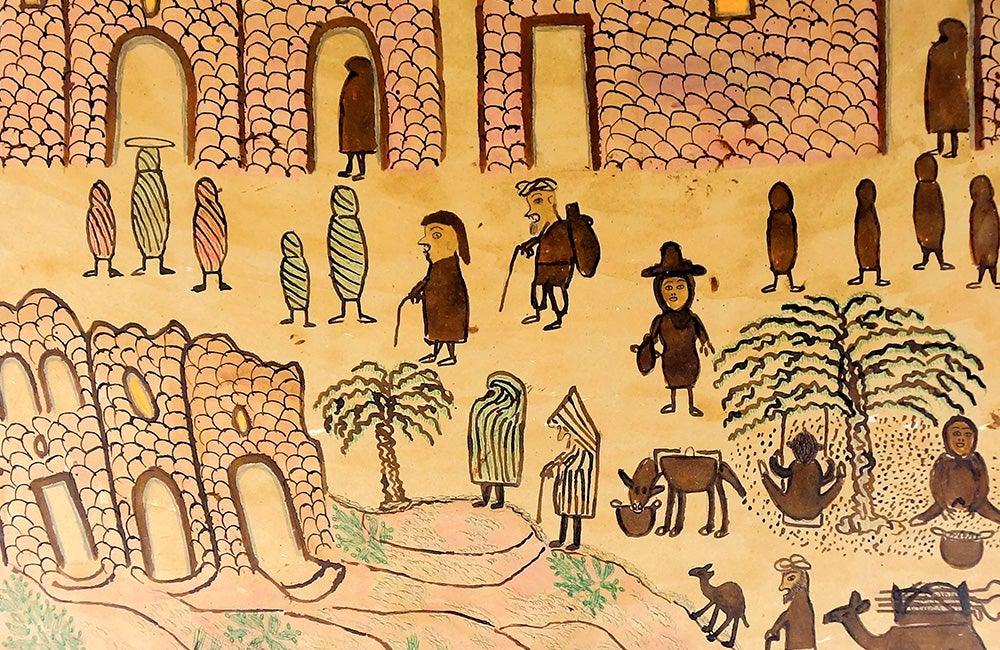First published: Spring 2020
From his windswept Moroccan homeland, this artist creates images of simplicity, harmony and balance
Babahoum was drawing at a very young age – probably in the same position as today, squatting down on the floor, maybe even drawing on the floor. “I was gifted, being able to draw is a gift,” he says.
He lives a day’s walk west of the port city of Essaouira on Morocco’s Atlantic coast. Home for him is one of a small group of houses that are surrounded by hills of argan trees, where family members of all ages also live. He was born there 82 years ago. It is a countryside swept by the winds: soft, light, western wind, which calms and cools in the heat of the summer; eastern wind from the Sahara, which picks up the dust, hurts the eyes and slams doors. Everything is swept away by the wind, even children’s dreams.
As a young man, Babahoum left this countryside, avoiding a life of farm labour and possibly searching for new horizons. He tried his hand at various trades – scrap merchant, second-hand goods dealer providing daily supplies to the souk merchants, worker in an olive press – looking for a place for himself and a life that he wanted. It was not until the eve of his seventieth birthday that he walked into an art gallery in Essaouira to show the dealers his drawings. He did not even dare to say that they were his work.
 Building, 2016, pencil and gouache on paper, 21 x 29 in. / 73 x 53 cm, courtesy: Philippe Saada
Building, 2016, pencil and gouache on paper, 21 x 29 in. / 73 x 53 cm, courtesy: Philippe Saada
Today, Babahoum has rediscovered the peaceful countryside of his birth. It is unchanged, still windswept. Life is a cycle. Babahoum’s life must have been full of tribulations and disenchantments but from that life, in the countryside and the town, he has created a singular body of work.
Crouching down, Babahoum draws and paints under the kind gaze and suggestions of his wife. Recovered wood, cardboard and paper are the surfaces upon which he works; gouache and walnut stains are the pigments; and brushes and ballpoint pens are his tools. Central to his work are numerous figures and animals, methodically arranged, in rural or village settings. He paints daily life, the souk, houses with inhabitants at the windows, goats climbing up into argan trees, shepherds’ camps. He often creates multiple versions of the same scene. Sometimes, he depicts just a single figure: a musician, boxer, veiled woman, old man bent over his walking stick. Then, there are those drawings where the line thickens and darkens, dominates, tracing strange figures, suggesting beings that are sometimes human-like, sometimes animal-like. This is another side to Babahoum’s world where knotted, deformed bodies and sinister silhouettes exist, and strangeness lingers. Mountains turn into elephants, fish morph into marine monsters, houses wear grotesque masks.
This is an article extract; read the full article in Raw Vision #105




